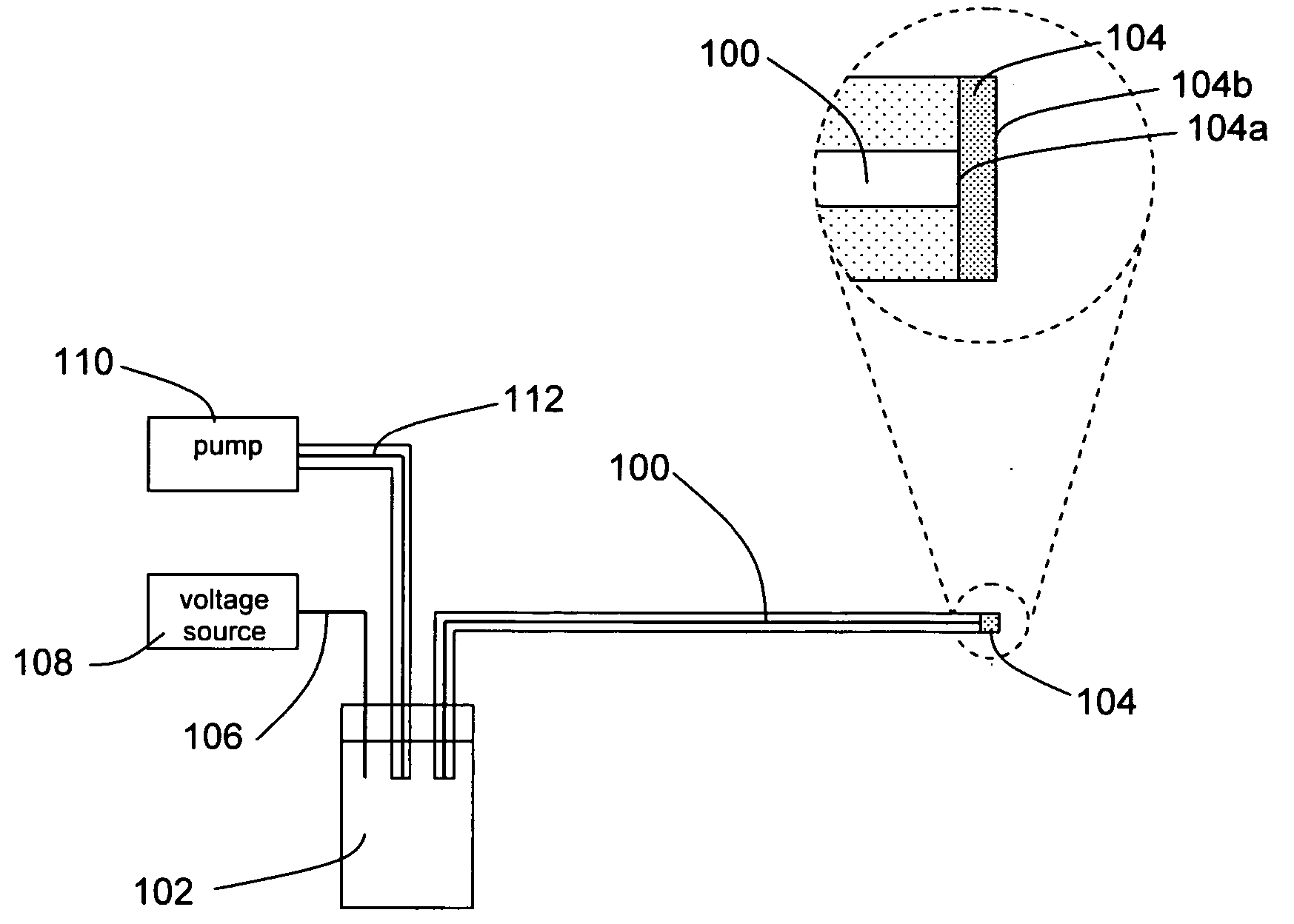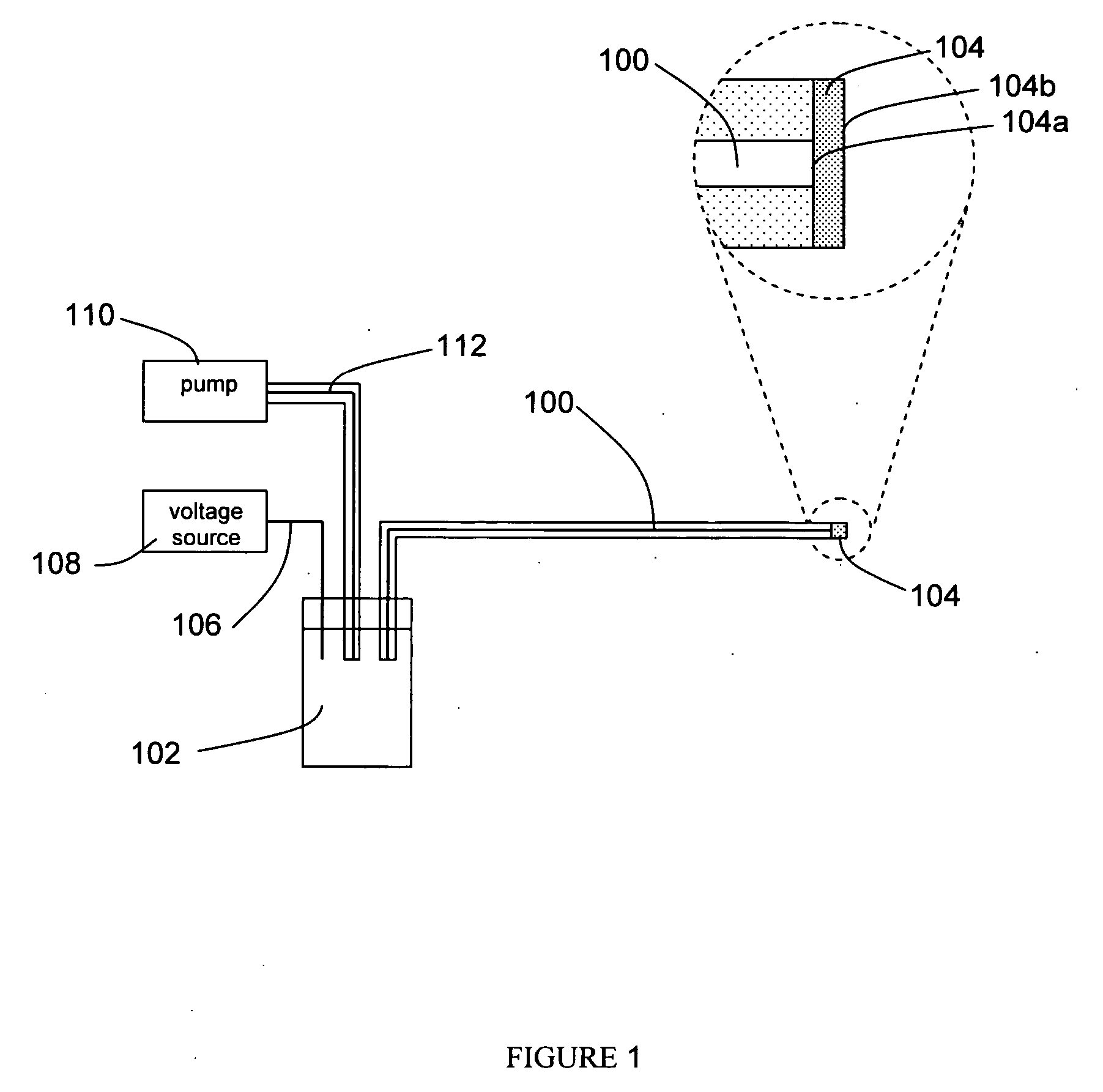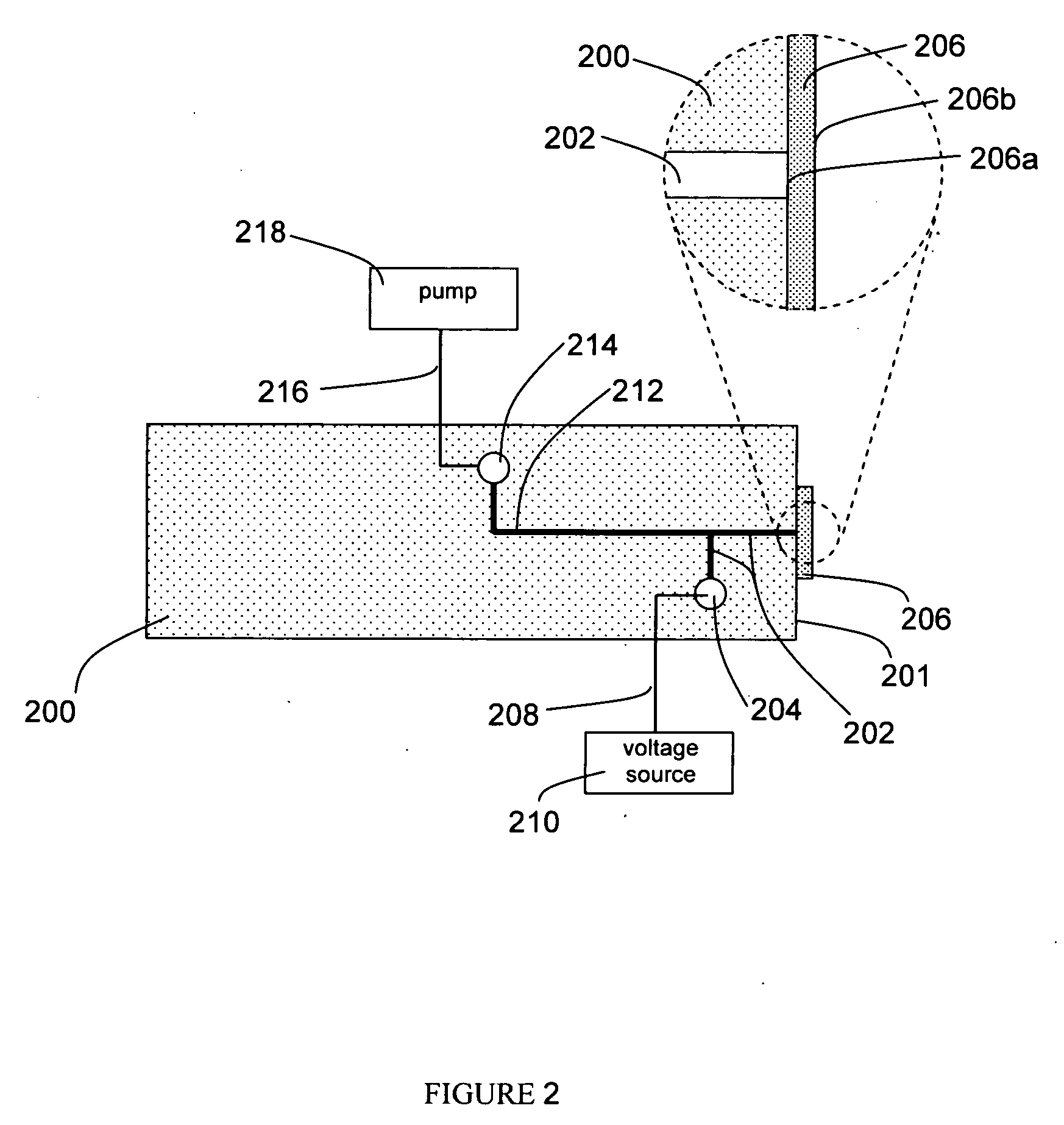Methods and apparatus for porous membrane electrospray and multiplexed coupling of microfluidic systems with mass spectrometry
a technology of microfluidic systems and porous membranes, applied in the direction of dispersed particle separation, instruments, separation processes, etc., can solve the problems of reducing the surface area of the microchannel, the difficulty of forming high density electrospray tip arrays, and the inability to consistently establish well defined, stable taylor cones at the microchannel exit, etc., to achieve high surface area, reduce pressure, and reduce pressure
- Summary
- Abstract
- Description
- Claims
- Application Information
AI Technical Summary
Benefits of technology
Problems solved by technology
Method used
Image
Examples
Embodiment Construction
[0026] I. Apparatus
[0027] A preferred embodiment of the apparatus is depicted in FIG. 1. The apparatus comprises an electrospray microchannel 100, said electrospray microchannel possessing a first end and a second end, wherein the first end is in fluid communication with an electrospray reservoir 102, and a porous membrane 104 is affixed to the second end. The porous membrane, which possesses a bonded face 104a which is affixed to the second end of the electrospray microchannel such that the inner diameter of the electrospray microchannel is fully covered by the membrane, and an exposed face 104b which is opposite the bonded face. The membrane is bonded to the electrospray microchannel using one of several possible methods, such as thermal bonding, adhesive bonding, or solvent bonding. The apparatus further comprises an electrospray electrode 106, possessing a first end and a second end, wherein the first end of said electrode is in electrical communication with the fluid within th...
PUM
 Login to View More
Login to View More Abstract
Description
Claims
Application Information
 Login to View More
Login to View More - R&D
- Intellectual Property
- Life Sciences
- Materials
- Tech Scout
- Unparalleled Data Quality
- Higher Quality Content
- 60% Fewer Hallucinations
Browse by: Latest US Patents, China's latest patents, Technical Efficacy Thesaurus, Application Domain, Technology Topic, Popular Technical Reports.
© 2025 PatSnap. All rights reserved.Legal|Privacy policy|Modern Slavery Act Transparency Statement|Sitemap|About US| Contact US: help@patsnap.com



